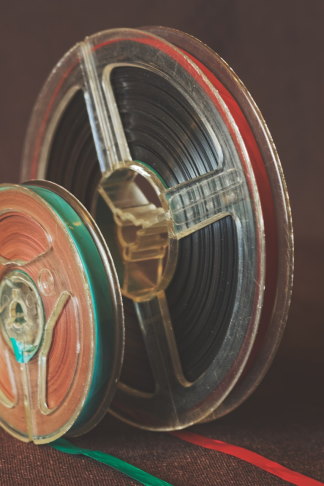 If your family recorded home videos between the 1930s and the 1970s, odds are they captured that vacation or piano recital on 8 mm film. (Super 8, Kodak’s hugely popular take on the original amateur film format, debuted in 1965.) If your company made marketing films or recorded important proceedings in the post-war era, they probably used 16 mm film. Suffice it to say, analog film captured much of the vital motion picture content even outside Hollywood for most of the 20th century.
If your family recorded home videos between the 1930s and the 1970s, odds are they captured that vacation or piano recital on 8 mm film. (Super 8, Kodak’s hugely popular take on the original amateur film format, debuted in 1965.) If your company made marketing films or recorded important proceedings in the post-war era, they probably used 16 mm film. Suffice it to say, analog film captured much of the vital motion picture content even outside Hollywood for most of the 20th century.
Many of those films are still with us, documenting family history or fulfilling legal record retention requirements all these years later. But film is a relatively fragile medium, vulnerable to degradation unless kept in ideal conditions. The good news? You can and should convert your analog film collection to a digital format, preserving the content for the ages. In the meantime, you may be tempted to throw a reel onto the projector.
If your film has started to degrade, however, running it through a playback device may cause even more damage — or even destroy some or all of the images stored on these thin plastic sheets. Luckily, there are some clear indications that film is beginning to decay and should be digitally preserved as soon as possible. Here are the major signs of analog film damage to watch out for:
- Vinegar syndrome. In film preservation circles, the most telltale sign of decaying film is vinegar syndrome, more accurately described as acetate film base degradation. Cellulose acetate film — which consists of light-sensitive materials coating a thin plastic sheet — was developed in the early 20th century as a replacement for the earlier nitrate-based films, which were dangerously flammable.For that reason, acetate-based film is often called safety film. The plastic base of safety film can decay over time, especially when exposed to high temperatures and/or humidity. As it decays, this material gives off a vinegary scent: olfactory evidence that it’s time to contact a professional about digitizing your film.
- Flaking or shedding particles. The plastic bases of both nitrite and safety films are prone to brittleness and shrinkage with age, conditions made worse by hot, humid conditions. As film decays, it may flake or break down into larger shards. If a film container holds flakes or larger loose particles of material, that’s evidence film is too damaged to consider running through a projector. Again, it’s time to reach out to a professional.
- Bunching or “spoking” in the roll. Fresh safety film is a flexible material that rolls tightly into an even circle. If you see bunches, lumps, or symmetrical “spokes” in a roll of film, that film is likely shrunken and brittle. This is a late stage of vinegar syndrome; you may still detect a vinegary odor coming from your film containers. Keep the film in its container and move that container to a cool, dry space until you can consult with a film recovery engineer.
- White residue. Wet film is an ideal environment for mold. Typically, this mold appears as a white coating. It may stick rolls of film together, making them difficult to unwind. If you see mold, you can guess what to do: Store your film in a cooler, dryer location, and reach out to Datarecovery.com.
What to Do If You See Signs of Analog Film Degradation
It’s worth saying again: If you notice any of these symptoms in your films, do not attempt to view them. Signs of analog film damage can be alarming, but they don’t necessarily mean your content is lost forever. You can verify the damage with diagnostic tools called A-D Strips; these chemically treated bits of paper react to the acidic vapor associated with vinegar syndrome, changing color to indicate the extent of the damage. While A-D Strips are useful for detecting film decay, they can’t preserve a film’s content; instead, they serve as yet another sign that you need professional digitization services.
Contact Datarecovery.com to discuss analog-to-digital conversion for your film reels. Our team of film recovery engineers can preserve film content, even in the event of damage or decay in many cases. They use a suite of advanced analog-to-digital tools to create the highest quality digital copies of analog films. Call 1-800-237-4200 to discuss your case, or fill out this form to get a free film-digitization quote.




